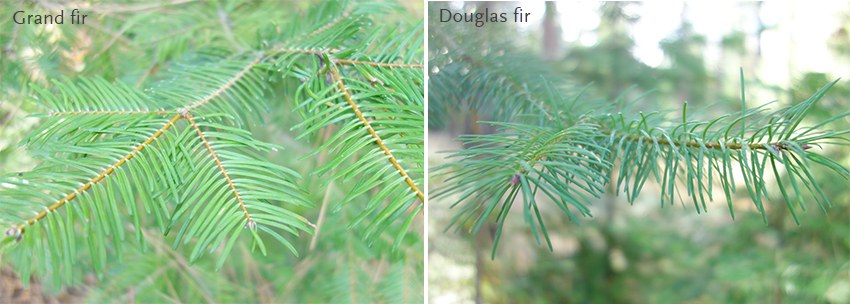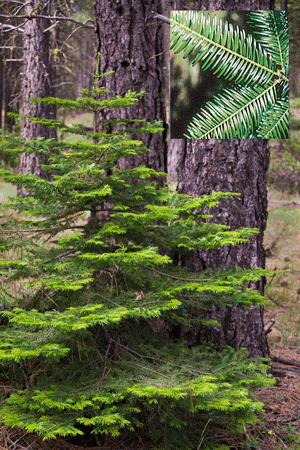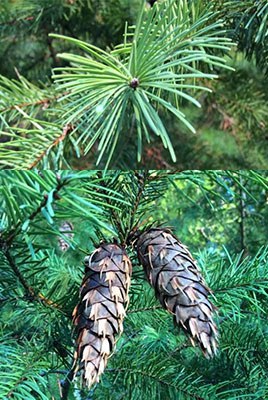'Tis the season for conifer trees!
We are excited to host the Deschutes Land Trust’s annual Tree Hunt. Participants brave the cold and trek through the forest at the Metolius Preserve to find their favorite grand fir tree to take home for the holidays.
Removing grand fir helps restore the forests, which were historically dominated by older ponderosa pine. Decades of fire suppression have allowed grand fir to crowd the forests, posing fire risks and threatening the overall health of the land.
As the Tree Hunt approaches, here is a quick reminder of how to identify the grand fir from the Douglas fir, another common tree on the Metolius Preserve.
Watch the full video here.
For those who prefer to read a primer on the difference between grand firs and Douglas firs:
 Grand Fir (Abies grandis)
Grand Fir (Abies grandis)
The grand fir is an evergreen true fir. True firs, (Genus Abies) are so named to distinguish them from Douglas firs and a number of other “pretenders.” They are medium to large trees, often 150-200’ tall. Trees tend to have narrow shape and rigid upright or horizontal branching.
Needles are about 1” long and highly aromatic. They are blunt to the touch. On the top surface, needles are yellowish-green, while on the underside there are white bands. Needles are two distinct lengths, alternating longer and shorter. Needles are in a flat plane coming off the branch.
Cones are upright, cylindrical, 3-4”, perched on the topmost branches. Cones of true firs do not fall intact like other conifer cones. In late fall, their scales tumble off one by one when the seeds have ripened.
Bark is smooth and pale gray, becoming thicker on older trees and dividing into thick, flat-topped ridges.
Search for more photos of Grand fir (Abies grandis) on Oregon Flora Project.
 Douglas Fir (Pseudotsuga menziesii)
Douglas Fir (Pseudotsuga menziesii)
The Douglas Fir (commonly called Doug fir) is the most abundant tree species in Oregon and the conifer with the greatest north-south range (from northern BC to Mexico). The name Douglas fir may be misleading as it is not a true fir, but a member of it’s own genus Pseudotsuga, which means false hemlock.
Needles are single, 1/2 - 1 1/2” long generally with a white stripe on underside and blunt-tipped (not sharp to the touch). Needles come off the branch in a bottle brush shape.
Cones are 3-4” long with a paper-thin 3-pointed bract sticking out beneath each woody scale. These bracts have been compared to a three-pronged pitchfork or to the hind feet and tail of a mouse diving into a hole.
Bark of mature trees is dark brown and deeply grooved.
Search for more photos of Douglas fir (Pseudotsuga menziesii) on Oregon Flora Project.
Learn more:


